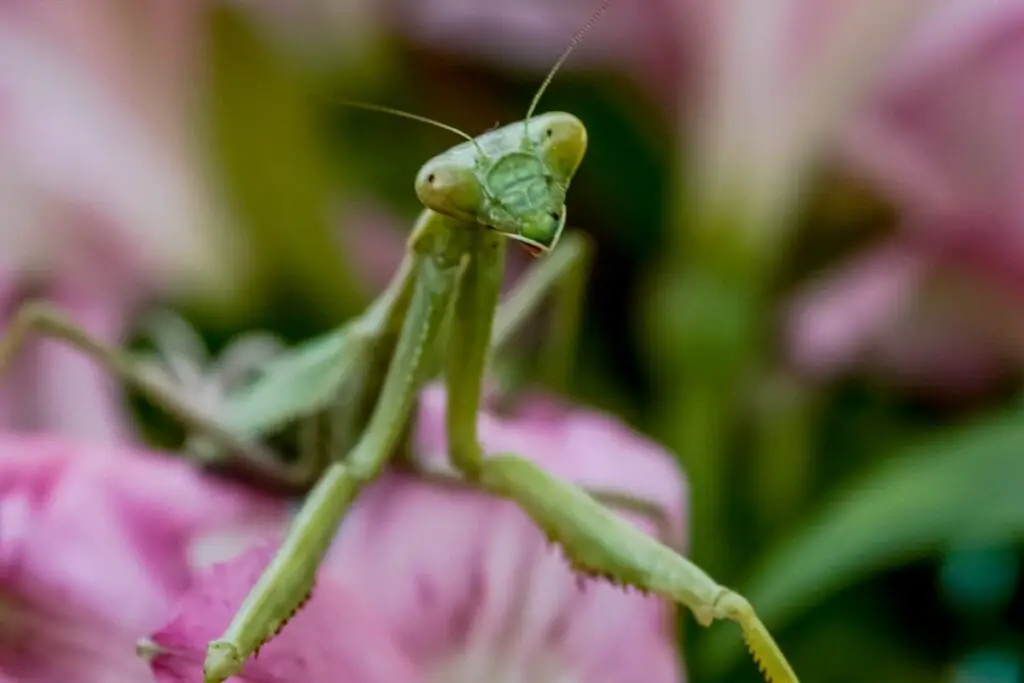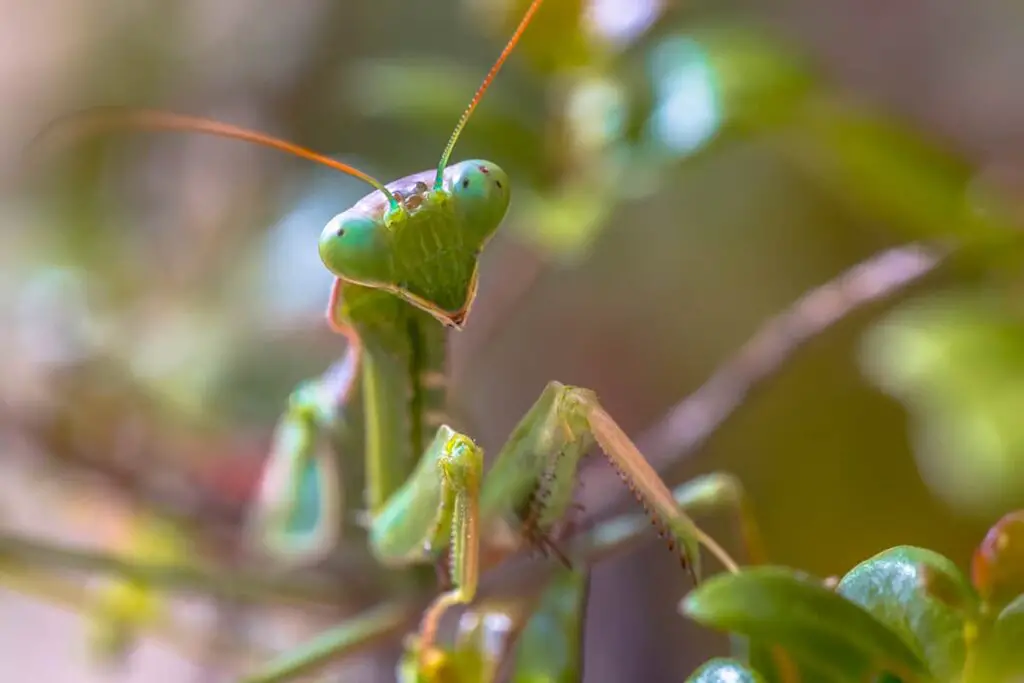
When you watch a praying mantis navigate its environment, you might be curious about its capability for flight. These fascinating insects are known for their distinctive hunting stance, but their ability to fly is not as commonly understood. As it turns out, the flying abilities of praying mantises are quite varied and depend on factors such as species, sex, and physiological condition.
Some praying mantises are indeed equipped to take to the skies, albeit in a manner that’s unlikely to mirror the graceful flight of a bird or a butterfly. Typically, mantises engage in short bursts of flight, leveraging their wings to hop from one location to another, which conserves energy and keeps them relatively inconspicuous. This flight style is usually more about function than flair, aiding in swift escapes and efficient hunting.
However, not all mantises are good flyers, and in some cases, they might not be able to fly at all. For instance, in flying mantises, only the males are adept at taking airborn excursions, while the females, though winged, are often too heavy and thus limited to the ground. Your curiosity may now spur the question: just how far can these insects fly under their own power? The answer falls within a nuanced spectrum based on the individual characteristics of the mantis, as well as environmental conditions and the necessity of the flight.
Praying Mantis Flight Capabilities
Understanding your praying mantis’s ability to fly starts with its anatomy. The wings of a praying mantis are unique, with certain mantises, especially males, having the capability to fly. Females, due to their size and weight after maturity, might not take to the skies.
Males vs. Females: Males are lighter and can often fly to find a mate. They are known to cover long distances. Females, on the other hand, typically have larger abdomens and full-grown wings but usually do not fly. For more detail on the gender differences and flight of these creatures, consider the information provided about wing structure and flying prowess.
Species Variation: Not all species of praying mantis have the same flight capacity. Some species might have underdeveloped wings or may even be wingless.
Age Factor: Youthful mantises might be more likely to exhibit flight than their older counterparts, depending on the stage of their life cycle.
When a praying mantis does fly, it’s often a short and low-to-ground affair, reserved for quick escapes or short-distance travel. It’s fascinating to note the different flight capabilities among the over 2,400 praying mantis species.
To get an idea of how a praying mantis takes advantage of its flight abilities, keep in mind the following factors:
- Predation & Defense
- Mate Seeking
- Habitat Navigation
Remember, your praying mantis’s ability to fly can depend largely on the conditions of its environment as well as its biological makeup.
Factors Influencing Flight Distance
When it comes to how far you can expect a praying mantis to fly, several critical elements play a role. These include the mantis’s body size and wing structure, their energy and stamina, and the environmental conditions they face.
Body Size and Wing Structure
Your praying mantis’s capability to fly, and the distance it can cover, is greatly influenced by its body size and wing structure. Generally, male mantises are lighter and thus better flyers compared to females. In males, the ratio between body mass and wing size is optimal, allowing them to fly more efficiently. Conversely, females often have larger bodies and comparatively smaller wings, which can limit their flight.
Energy and Stamina
The energy and stamina of a praying mantis are crucial for sustained flight. This is analogous to how fuel works in vehicles – more energy means they can fly farther. Mantises primarily use flight for short bursts during mating pursuits or to escape predators, which means their stamina is suited for short-distance flights rather than long migrations.
Environmental Conditions
Lastly, environmental conditions such as wind, humidity, and temperature can either assist or hinder your praying mantis’s flight. Favorable wind conditions can enable mantises to travel further than usual, while adverse weather might ground them or drastically reduce their flight capabilities.
Behavioral Patterns of Praying Mantis Flight
When you observe praying mantises, you might notice that not all of them are adept at flying. The ability to fly largely depends on the species and gender. Typically, adult male praying mantises have more developed wings and are more likely to fly. This is largely to seek out females during mating season, with males even being capable of flying long distances to find a mate.
In contrast, female praying mantises are often heavier and have a bulkier body due to their reproductive role, making flight more difficult for them. As a result, females generally fly less frequently and when they do, it’s usually for shorter distances.
Here’s how you might see praying mantises fly:
- Short bursts: Escaping predators or hazards.
- Hovering: Rare but possible during hunting.
- Directed flight: Males seeking females.
Praying mantis flight occurs in the right conditions – usually warm weather when the mantis is most active. If you’re curious about seeing them in action, the best chance might be during the evening hours when males embark on their quest for a mate.
Some praying mantises, specifically certain species or those in the later stages of their life, may have “vestigial wings” which render them effectively flightless. The presence of these rudimentary wings doesn’t support sustained flight.
Remember, the flight of a praying mantis is an energy-demanding action and not a casual activity for these insects. Instead, flight serves specific behavioral purposes like mating, hunting, or evading predators.
Frequently Asked Questions
Understanding the flight capabilities of praying mantises can be quite intriguing. Let’s explore some specific details about how these insects take to the skies.
What is the typical range for a praying mantis when it flies?
Praying mantises, especially the males, are adept flyers with the ability to cover a few hundred meters when searching for mates or exploring their environment.
Is it common for praying mantises to fly long distances?
While praying mantises can fly, they typically do so for short distances. Long flights are less common and usually related to mating rituals or dispersal.
How does the flying ability of a praying mantis differ at night compared to daytime?
Praying mantises are less active at night, so they rarely fly after dark. Their flying is predominantly observed during daylight hours when they are most active.
Are female praying mantises capable of flight, and if so, how does it compare to males?
Female praying mantises are generally heavier and less adept at flying than males. However, they can fly short distances, particularly if it’s necessary for survival or reproduction.
Can a praying mantis both fly and jump, and what are the distances involved?
A praying mantis is capable of both flying and jumping. They can jump several times their body length, while flying can take them across much wider gaps or upward to higher perches.
Why might a praying mantis choose not to fly, even if it’s capable?
A praying mantis might avoid flight to conserve energy, evade predators, or if the environment does not necessitate flying. Sometimes staying still and blending into the surroundings can be a more effective survival strategy.
Driven by a passion for those tiny creatures that rule our world, we at Bug Domain strive to be your go-to resource for information on insects.




